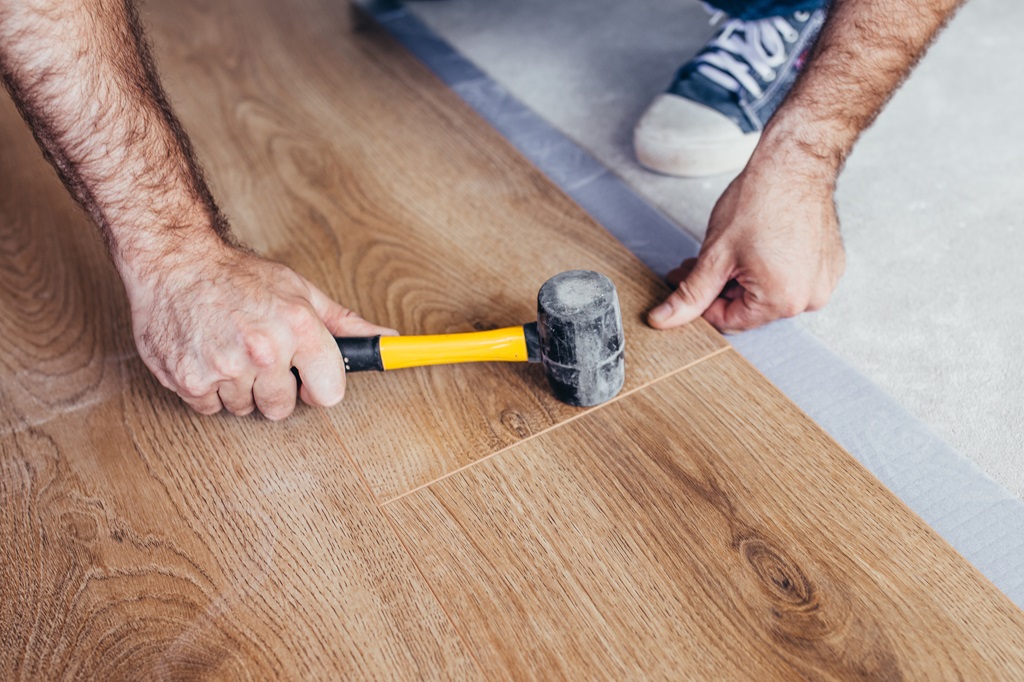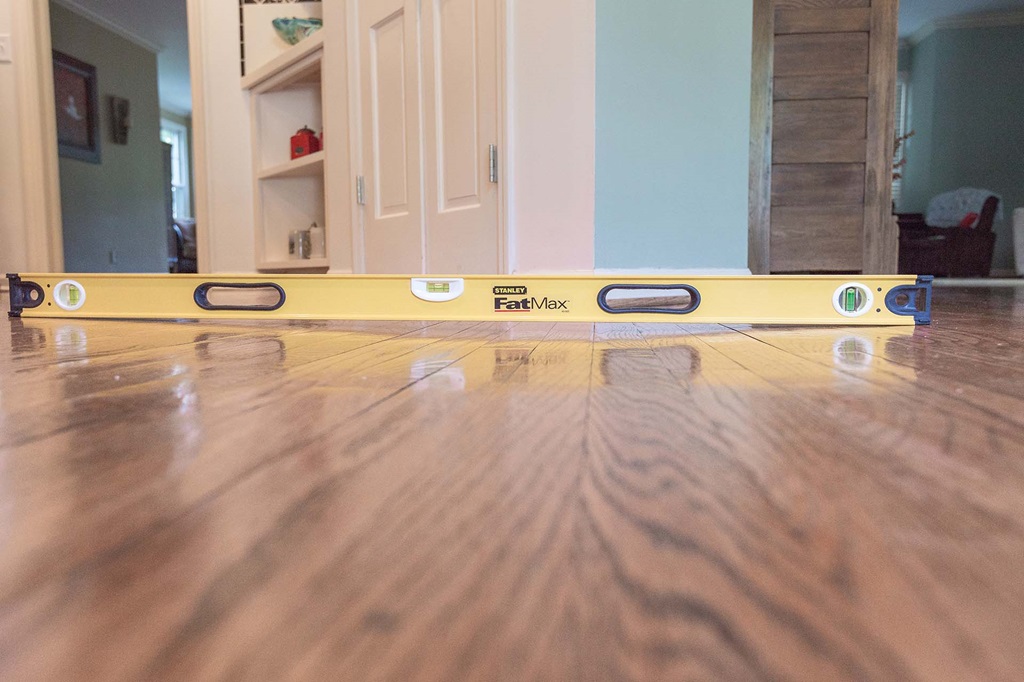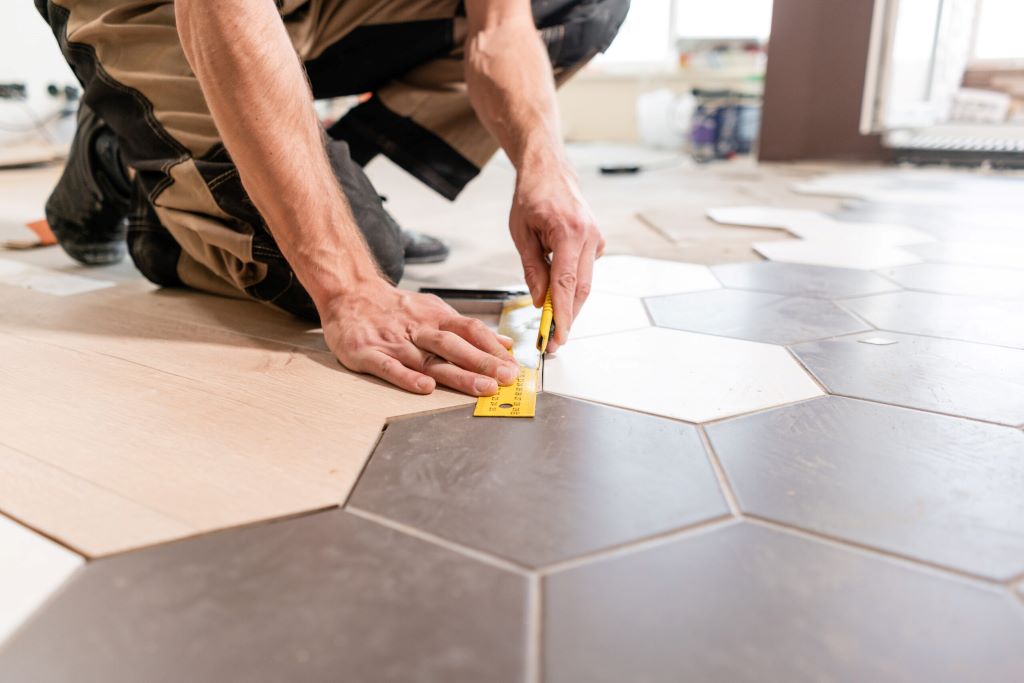To fix an uneven wood floor, sand the floor to remove any top layer and unevenness, then use an orbital sander to smooth out the floor and blend in any sanding marks.
Understanding Uneven Wood Floors
Uneven wood floors can be a frustrating problem to deal with. Not only do they detract from the aesthetic appeal of your space, but they can also pose a safety risk. Understanding the causes and impact of uneven wood floors is crucial in order to effectively tackle this issue. In this section, we will discuss the causes of uneven wood floors and the potential impact they can have on your home.
Causes Of Uneven Wood Floors
There are several factors that can contribute to uneven wood floors. It is important to identify the root cause in order to determine the appropriate solution.
Here are some common causes:
- Uneven subfloor: In some cases, the subfloor beneath the wood floor may not be level. This can be due to improper installation or natural settling of the foundation.
- Sagging floor joists: Over time, floor joists may start to sag, resulting in an uneven wood floor. This can be caused by factors such as water damage, aging, or structural issues.
- Uneven transition strips: Transition strips are used to connect different types of flooring materials. If these strips are not installed properly or are damaged, they can create uneven areas on the wood floor.
Impact Of Uneven Wood Floors
An uneven wood floor can have various implications for your home:
- Tripping hazards: Uneven sections of the floor can pose a tripping hazard, particularly for young children or elderly individuals.
- Poor aesthetics: Uneven wood floors can negatively impact the overall appearance of your space. They can make the room look unfinished or poorly maintained.
- Damage to furniture: Furniture placed on an uneven wood floor may wobble or tilt, potentially causing damage to both the furniture and the floor itself.
Now that we have explored the causes and impact of uneven wood floors, it is time to move on to the next step – fixing the problem. In the following sections, we will discuss various methods and techniques for addressing uneven wood floors.
Diy Solutions For Fixing Uneven Wood Floors
Are you tired of walking on an uneven wood floor that feels uncomfortable and looks unsightly? Don’t worry, you don’t have to spend a fortune on professional help. With a little time and effort, you can fix your uneven wood floor yourself. In this blog post, we will discuss some DIY solutions that will help you level your floor and restore its beauty. Whether you have minor unevenness or major sagging, we’ve got you covered.
Assessing The Floor
Before you start fixing your uneven wood floor, it’s important to assess the extent of the problem. Take a close look at the floor and identify any areas that are noticeably uneven. This will help you determine the best approach for leveling the floor.
Leveling With Subflooring
If your wood floor is significantly uneven, one effective solution is to use subflooring. Subflooring is a layer of plywood or other durable material that is installed over the existing floor to create a level surface.
Here are the steps to level your floor using subflooring:
- Measure the dimensions of the room and cut the subflooring material accordingly.
- Clean the existing floor thoroughly to ensure proper adhesion.
- Apply construction adhesive to the back of the subflooring material and press it firmly onto the existing floor.
- Secure the subflooring in place with screws or nails, ensuring they are flush with the surface.
Using Self-leveling Underlayment
If your wood floor has minor unevenness, self-leveling underlayment can be an ideal solution. Self-leveling underlayment is a mixture of cement and other materials that is poured onto the floor and spread out to create a smooth and level surface.
Follow these steps to use self-leveling underlayment:
- Clean the floor and remove any debris or loose materials.
- Prime the floor to ensure proper adhesion of the self-leveling underlayment.
- Mix the self-leveling underlayment according to the manufacturer’s instructions.
- Pour the mixture onto the floor, starting from one corner and working your way towards the exit.
- Use a trowel or a straightedge to spread the mixture evenly across the floor.
- Allow the self-leveling underlayment to dry completely before proceeding with any further steps.
Sanding Techniques
If the unevenness of your wood floor is not too severe, sanding the floor can help to level it out.
Here is a step-by-step guide to sanding your wood floor:
- Start by using a belt sander to remove the top layer of the floor and any unevenness.
- Follow up with an orbital sander to smooth out the surface and create an even finish.
- Be sure to wear proper safety gear, including goggles and a dust mask, to protect yourself from dust and debris.
- Once you have finished sanding, clean the floor thoroughly to remove any dust or residue.
- Apply a layer of wood finish to protect the floor and enhance its appearance.
With these DIY solutions, you can easily fix your uneven wood floor and transform it into a smooth and beautiful surface. Remember to take your time and follow the instructions carefully to achieve the best results. Now you can enjoy walking on a level floor that adds value and charm to your space!
Professional Solutions For Fixing Uneven Wood Floors
Uneven wood floors can be a frustrating and unsightly issue. Fortunately, there are professional solutions that can effectively rectify this problem. Whether it’s using specialized floor patch products, installing underlayment, or hiring floor repair specialists, these professional methods can help restore the beauty and functionality of your wood floors.
Floor Patch Products
Floor patch products are a convenient and efficient solution for fixing uneven wood floors. These products are designed to fill in gaps, cracks, and low spots on the floor’s surface, creating a smooth and level foundation for the wood flooring to rest upon. With various formulations available, including self-leveling compounds, these products offer a versatile approach to addressing unevenness in wood floors.
Underlayment Installation
Underlayment installation is a crucial step in leveling uneven wood floors. By adding a layer of underlayment, such as wood fiber underlayment or foam underlayment, you can create a stable and uniform surface for the wood flooring. Underlayment helps to mitigate minor irregularities and enhance the overall stability and durability of the floor.
Hiring Floor Repair Specialists
Hiring floor repair specialists can be a reliable option for addressing significant or complex unevenness in wood floors. Professional repair experts have the expertise, tools, and techniques to accurately assess the floor’s condition and implement effective solutions. Whether it involves sanding, leveling, or comprehensive repair, their specialized skills can ensure a high-quality, long-lasting fix for your wood floors.
Preventive Measures To Avoid Uneven Wood Floors
Preventive measures can help avoid uneven wood floors. By regularly inspecting and maintaining the subfloor, fixing any issues promptly, and using proper installation techniques, you can prevent unevenness in your wood flooring. Additionally, ensuring proper moisture levels, avoiding heavy furniture on the wood floors, and using rugs or mats in high-traffic areas can also help prevent unevenness.
Regular Inspections
Performing regular inspections of your wood floors can help you detect any signs of unevenness early on. Inspect the floors visually for any visible gaps or dips. You can also run your hand along the surface to feel for any uneven spots. If you notice any issues, it’s important to address them promptly to prevent further damage.
Managing Moisture Levels
Moisture is one of the main culprits behind uneven wood floors. Excess moisture can cause the wood to expand and contract, leading to warping and unevenness. To prevent this, ensure proper moisture management by:
- Maintaining a consistent humidity level in your home. Use a humidifier in dry seasons and a dehumidifier in humid seasons to keep the moisture levels balanced.
- Fixing any leaks or water damage promptly. Water can seep into the subfloor and cause it to swell, leading to unevenness in the wood floor.
- Avoiding excessive cleaning with water. Instead, use a damp microfiber mop or a wood floor cleaner specifically designed for your type of flooring.
Proper Subfloor Installation
The subfloor plays a crucial role in the stability and evenness of your wood floor. Proper installation of the subfloor is essential to avoid unevenness.
Consider the following during the installation process:
- Ensure that the subfloor is flat and level before installing the wood flooring. Use a level tool to check for any deviations.
- The subfloor should be free from any moisture issues. Proper moisture barrier installation can help prevent moisture-related problems that can cause unevenness.
- Take care during the installation process to avoid any damage or sagging of the subfloor. This can lead to unevenness in the wood floor above.
- Consider using leveling compounds or shims to address any minor deviations in the subfloor before installing the wood flooring.
By following these preventive measures, you can avoid unevenness in your wood floors and ensure their longevity. Regular inspections, managing moisture levels, and proper subfloor installation are all important factors in maintaining a smooth and even wood floor.
Conclusion
Fixing an uneven wood floor is achievable with the right tools and techniques. From leveling subfloors and using floor patch products to sanding and adding underlayment, there are various methods to address this issue. By following the recommended steps and seeking professional advice when needed, you can successfully restore the evenness and integrity of your wood floor.
Frequently Asked Questions On How To Fix Uneven Wood Floor
Can You Fix Uneven Hardwood Floors?
Yes, uneven hardwood floors can be fixed by sanding them to level out the surface. Sanding with a belt sander first, followed by smoothing with an orbital sander can help blend any unevenness. Additionally, using a floor patch product or floor leveler can also fix low spots in the subfloor.
How Do You Level An Extremely Uneven Floor?
To level an extremely uneven floor, use an underlayment, floor leveler, or floor patch product. These options can fix low spots in wood or concrete subfloors by filling in gaps and creating a smooth surface. Underlayments also provide insulation, sound absorption, and floor protection.
What Is The Best Solution For Uneven Floors?
The best solution for uneven floors is to use a floor patch product. This can be used on both concrete and wooden subfloors to level out dips, slants, cracks, and chips. It provides a smooth and even surface for your flooring.
Can You Fix Uneven Floors In Old House?
Yes, you can fix uneven floors in an old house. Use floor patch products or floor levelers to address low spots in wood or concrete subfloors. This helps to level the floor, providing a solution for dips, slants, and other unevenness.
Sanding is also useful for less severe unevenness.







